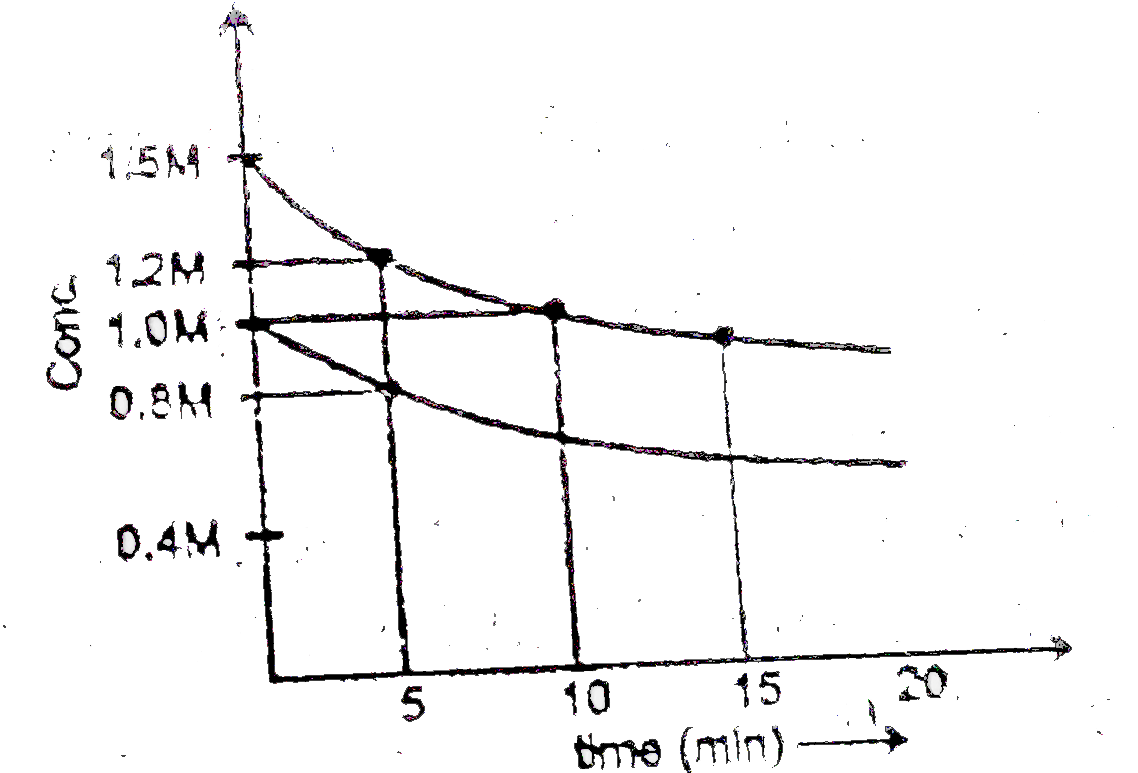(b) What is rate constant ? Write 'two applications' of rate law.
Step-by-Step Solution
Step 1: Define Rate Constant
The rate constant (k) of a chemical reaction is a proportionality factor that relates the rate of the reaction to the concentrations of the reactants. It is defined as the rate of the reaction when the concentrations of all reactants are at unity (1 mole per liter).
For example, in a reaction represented as:
A→P
The rate of the reaction can be expressed as:
R=k(A)n
where R is the rate of the reaction, (A) is the concentration of reactant A, and n is the order of the reaction. When the concentration of A is 1 mole per liter, the rate constant k equals the rate R.
Step 2: Applications of Rate Law
1. Estimating Reaction Rates: The rate law can be used to estimate the rate of a reaction for any given composition of the reactants. By knowing the concentrations of the reactants and the rate constant, one can calculate the rate of the reaction.
2. Predicting Reaction Mechanisms: The rate law can also help in predicting the mechanism of a complex reaction. By analyzing how the rate changes with varying concentrations of reactants, chemists can infer the steps involved in the reaction mechanism.
The rate constant (k) of a chemical reaction is a proportionality factor that relates the rate of the reaction to the concentrations of the reactants. It is defined as the rate of the reaction when the concentrations of all reactants are at unity (1 mole per liter).
A→P
The rate of the reaction can be expressed as:
R=k(A)n
where R is the rate of the reaction, (A) is the concentration of reactant A, and n is the order of the reaction. When the concentration of A is 1 mole per liter, the rate constant k equals the rate R.
1. Estimating Reaction Rates: The rate law can be used to estimate the rate of a reaction for any given composition of the reactants. By knowing the concentrations of the reactants and the rate constant, one can calculate the rate of the reaction.
2. Predicting Reaction Mechanisms: The rate law can also help in predicting the mechanism of a complex reaction. By analyzing how the rate changes with varying concentrations of reactants, chemists can infer the steps involved in the reaction mechanism.
Topper's Solved these Questions
- CHEMICAL KINETICSBOOK - PRADEEPCHAPTER - CHEMICAL KINETICSEXERCISE - ADDITIONAL QUESTIONS (SHORT ANSWER QUESTIONS) V. First order reactions, pseudo first order reactions and reactions and radioactive disintegration
5 Videos
- CHEMICAL KINETICSBOOK - PRADEEPCHAPTER - CHEMICAL KINETICSEXERCISE - ADDITIONAL QUESTIONS (SHORT ANSWER QUESTIONS) VI. Activation energy, effect of temp. on rate (Arrhenius eqn.) and effect of catalyst on rate
9 Videos
- CHEMICAL KINETICSBOOK - PRADEEPCHAPTER - CHEMICAL KINETICSEXERCISE - ADDITIONAL QUESTIONS (SHORT ANSWER QUESTIONS) III. Molecularity, mechanism and difference between order and molecularity
7 Videos
- BIOMOLECULES BOOK - PRADEEPCHAPTER - BIOMOLECULES EXERCISE - IMPORTANT QUESTIONS (FOR BOARD EXAMINATION)
25 Videos
- CHEMISTRY IN EVERYDAY LIFE BOOK - PRADEEPCHAPTER - CHEMISTRY IN EVERYDAY LIFE EXERCISE - IMPORTANT QUESTION FOR BOARD EXAMINATION
30 Videos
Similar Questions
Knowledge Check
Rate law for the reation A+B→ product is rate = k[A]2[B] . What is the rate constant , if rate of reaction at a given temperature is 0.22Ms−1 , when [A] = 1M and [B] = 0.25 M ?
A3.52M−2s−1B0.88M−2s−1C1.136M−2s−1D0.05M−2s−1Rate law for the reation A+B→ product is rate = k[A]2[B] . What is the rate constant , if rate of reaction at a given temperature is 0.22Ms−1 , when [A] = 1M and [B] = 0.25 M ?
A3.52M−2s−1B0.88M−2s−1C1.136M−2s−1D0.05M−2s−1The rate law expresses the relationship of the rate of a reaction to the rate constant and the concentration of the reactants raised to some powers for the general reaction.
aA+bB→cC+dD
Rate law takes the form
r=k[A]x[B]y
where x and y are number that must be determined experimentely k is the rate constant and [A] and [B] are concentration of A & B respectively.
The varitation of concentration of 'A' with time in two experiments starting with two different initial concentration of 'A' is given by the following graph.The reaction is represented by A(aq)→B(aq) what is rate of reaction (M/min) when conc. of A in aqueous solution was 1.8 M:
 A0.072 M min−1B0.1296 M min−1C0.036 M min−1D1 M min−1
A0.072 M min−1B0.1296 M min−1C0.036 M min−1D1 M min−1
Write factor effecting rate constant.
View SolutionFor a reaction the rate law expression is represented as follows:
Rate =k[A][B]1/2
i. Interpret whether the reaction is elementary or complex. Give reason to support your answer.
ii. Write the units of rate constant for this reaction if concentration of A and B is expressed in moles/L.
View SolutionWhat do you understand by the rate law and rate constant of a reaction? Identify the order of a reaction if the units of its rate constant are :
View SolutionIn a reaction A + B → Products
(i) If the initial concentration of A is doubled and B is kept constant, the rate of the reaction is doubled
(ii) If the initial concentration both A and B are doubled the rate of reaction becomes eight times
The rate law of the reaction is :
View SolutionIn the reaction : 3BrO−→BrO−3+2Br− (aqueous alkaline medium at 80∘C) the value of the rate constant in the rate law in terms of −ddt[BrO−] is 0.056Lmol−s−1. What will be the rate constant when the rate law is stated in terms of ddt[BrO−3] ?
View Solution
